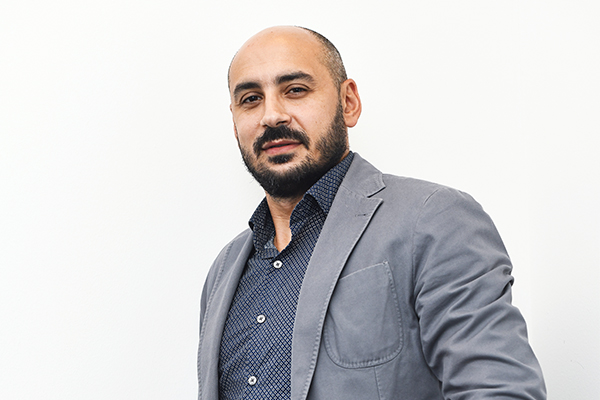Broadcast services provider and integrator Prolane, which has offices in Lebanon and Dubai, has developed a platform called Streamlane together with Open Broadcast Systems, based on the RIST protocol. In an exclusive interview with BroadcastPro ME, Maroon Khalil, Managing Partner of Prolane, speaks about the choice of the protocol and how it has helped his clients get their streaming service off the ground over the public internet.
Prolane is a broadcast services provider and systems integrator that specialises in offering technology services, AV and broadcast solutions, including video connectivity, contribution, distribution and ad insertion services, to MENA clients. While its HQ is in Lebanon, where it has a fleet of OB vans, SNGs, studios, stand-up positions for news, MCR and 360-degree support, its office in Dubai is more focussed on broadcast operations and support, with partners and clients ranging from satellite operators like Eutelsat, Nilesat and Arabasat to telecom partners like Etisalat and DU, and from teleport partners like Samacom and Evision to TV stations across the MENA region and the UAE.
In short, Prolane’s customers are a mix of broadcasters, telecom operators and satellite teleports from across the Middle East. In early 2019, the systems integrator found that its customers were looking to maximise efficiencies with new contribution and distribution technology.
The traditional way to transmit video and audio signals has been through either private fibre or satellite. As part of its managed service, therefore, Prolane decided to provide high-quality video connectivity over the public internet in order to help clients fully maximise the cost efficiencies afforded by IP delivery. As well as capturing and delivering video right across the entire Middle East, Prolane wanted to ensure that high video quality would be maintained, with no interruptions or drop in service, while keeping latency to the absolute minimum.
“We faced a challenge, however, when a 24/7 channel wanted to connect from its HQ to the Samacom teleport,” explains Maroon Khalil, founder of Prolane and a tech expert with several years of experience in the telecom industry. “Poor infrastructure made it challenging for my client to get a reliable signal by recovering all lost packets and reducing jitters while ensuring minimal latency and overhead over the public internet.”
This was a daunting challenge, especially considering that not all countries in the Middle East have stable and reliable internet connectivity. Poor connectivity naturally leads to poor video quality and jitter, which in turn means customers are simply not able to make the switch to IP. At the same time, Prolane needed to be ready to deliver video in very fast turnaround times.
Prolane initially partnered with a company that provided devices and solutions for video connectivity over IP, but they were quite expensive, Khalil points out. As a result, the systems integrator decided to create a platform for clients to contribute and distribute content over IP.
For this, Prolane enlisted the support of Open Broadcast Systems and developed a Linux-based solution using the RIST (Reliable Internet Stream Transport) protocol. This platform, called STREAMLANE, supports the RIST protocol and includes playout, encoders, decoders, multiplexers and ad inserters.
“The RIST protocol offers a simple yet highly effective method for transporting live video signals over unmanaged networks between different vendors (interoperability), and with adaptivity. For Prolane, that means it is able to deliver video across the region even when internet signal quality varies,” explains Kieran Kunhya, founder of Open Broadcast Systems.
RIST is a fairly new protocol to consider, adds Khalil. “It was started by a few manufacturers and can transport any video signal from point A to point B over the public internet with no packet loss, and its reliability is independent of the infrastructure in a country. It uses the ARQ (Automatic Repeat Query) technique for lost packet recovery and is a continuously evolving technology, but it is incredibly flexible and modular.”
Using the new platform, Prolane has been able to deliver video signals captured from the client side and deliver them to any destination desired, including to telco partners. Additionally, the solution enables a quick set-up, meaning clients can use it in very short timeframes. This is especially important for companies looking to initially test IP delivery alongside other methods.
One of the biggest benefits of RIST for Prolane is its ability to overcome the differing levels of internet connectivity across the region to deliver stable and broadcast-quality video delivery. By providing this reliable and robust solution, Prolane is now able to provide its customers with an opportunity to take advantage of the benefits of improved efficiencies that IP offers.
“With Open Broadcast System’s encoders and decoders, coupled with the RIST protocol, we are able to offer our customers a way to deliver video cost-effectively without sacrificing on quality, reliability and stability. This would not have been possible in the same way without RIST, which is able to effectively navigate differing levels of internet connectivity,” explains Khalil.
The systems integrator adds that with RIST, the company is able to offer more competitive rates and a better business model to clients. Today, the BBC and Beirut-based music channels Arabica TV and Aghani TV use Streamlane.
The solution combats the area-specific challenges of IP delivery in the Middle East by adopting RIST to enable high-quality delivery over the public internet, strengthening IP capabilities within the region. A significant benefit of adopting RIST is its interoperability between different products and solutions within every part of workflows. RIST has allowed Prolane to provide its customers in the Middle East with access to high-quality IP contribution and distribution, despite inconsistent internet connectivity.
“We are proud to be the first company to have adopted and used RIST in the MENA region,” Khalil concludes.

















































































